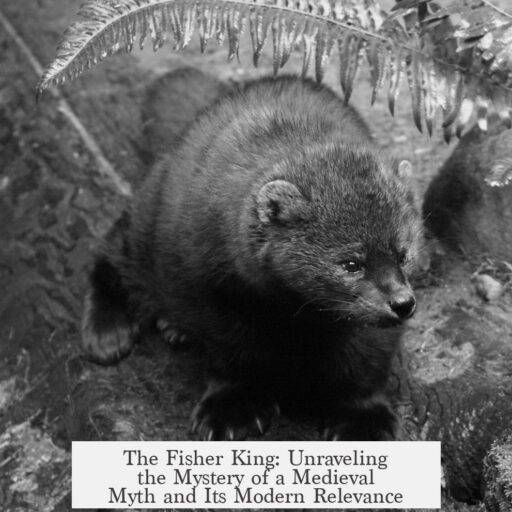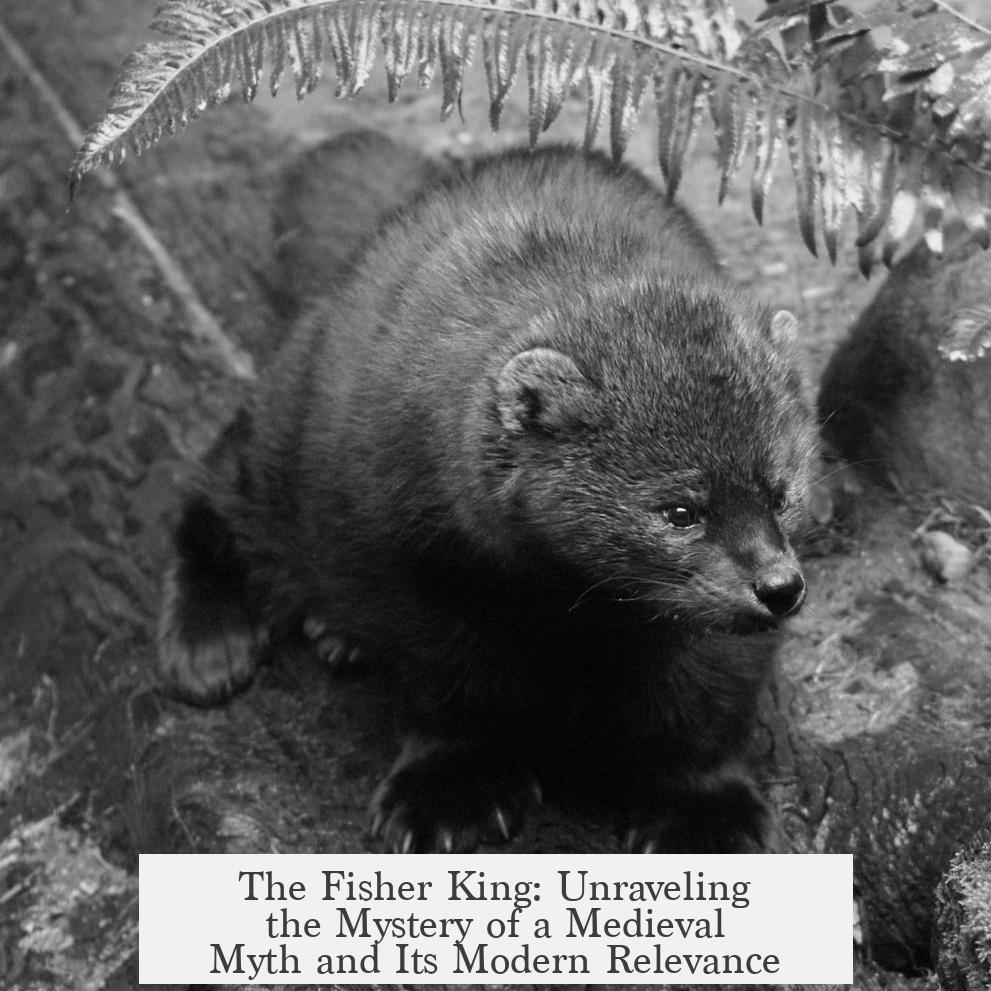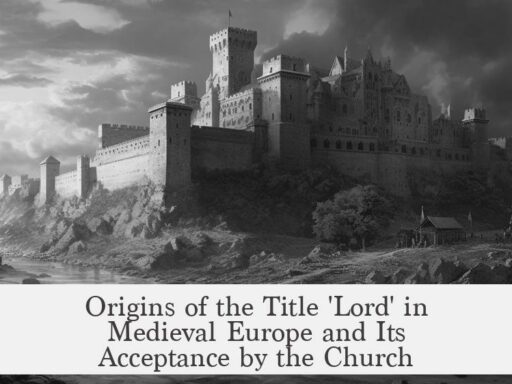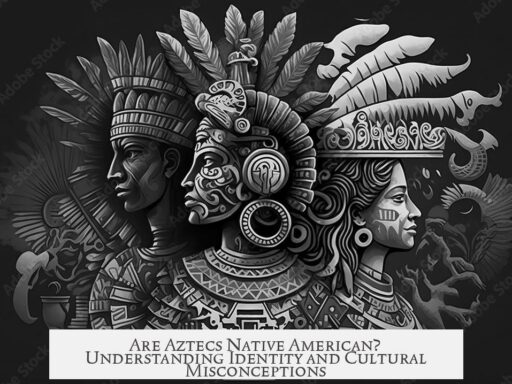The Fisher King is a mythical figure central to Grail romances, first introduced by Chrétien de Troyes in his unfinished 12th-century poem, Perceval. He is depicted as a wounded nobleman who rules the Grail Castle but suffers a crippling thigh injury that leaves him infertile and unable to perform his noble duties. His nickname, “Fisher King,” stems from his activity—fishing from a boat—due to his physical incapacitation. The Fisher King’s story intertwines with that of Perceval, whose quest to understand the Grail and heal the king forms the core of the narrative.
The Fisher King does not originate from any historical source. Instead, he belongs wholly to medieval literary tradition. Chrétien de Troyes introduces him as a symbolic figure in the Grail legend, focusing on his physical impairment and the associated spiritual and symbolic themes. The wound he bears, a javelin piercing his thighs, renders him lame and likely sterile, establishing a metaphor for a broken lineage and stalled fertility within the narrative.
In Perceval, the Fisher King is lord of the Grail Castle. Due to his injury, he cannot mount a horse or engage fully in noble pursuits. Instead, he fishes from a boat, an image laden with symbolic significance. The act of fishing connects the Fisher King to religious allusions, notably paralleling Simon Peter—the biblical “fisher of men.” This symbolic fishing suggests themes of spiritual leadership and the safeguarding of a sacred legacy.
Perceval encounters the Fisher King’s castle early in his quest. There, he witnesses three key items presented to him: a sword, a bleeding lance, and the Grail itself. These objects carry deep symbolic weight. For instance, the lance and sword have phallic imagery tied to fertility, while the Grail represents fecundity and divine grace, evidenced by Perceval’s survival on the Grail’s produce for seven years in the poem.
However, Perceval fails to ask the crucial “healing question” about these mysterious objects during his first visits. His silence leads to the castle’s abandonment and the continuation of the Fisher King’s suffering. Only upon returning and fulfilling certain expectations—symbolized by seeing the Fisher King three times and understanding the significance of the three items—is Perceval deemed worthy to receive the Grail. Thus, Perceval’s growth and the healing of the Fisher King are deeply intertwined.
The wound’s symbolism extends beyond the physical. It symbolizes a crisis in noble lineage and fertility—a metaphor for the king’s land and vitality. The Fisher King’s inability to heal himself and his realm reflects a stagnant condition awaiting resolution through a worthy successor. Perceval, by embracing virtue and renouncing sin, embodies the potential to restore this broken lineage. This allegory emphasizes the moral and spiritual requirements for leadership and renewal.
Religious undertones permeate the tale. The Fisher King’s fishing motif recalls Simon Peter, linking the narrative to Christian leadership and the foundation of the Church. The triadic symbolism—three objects, three visits—also echoes religious themes of the Trinity. Perceval’s journey can be interpreted as a spiritual progression toward joining a holy lineage initiated by the Fisher King. This joining requires merit, reinforcing medieval ideas about divinely sanctioned nobility and hereditary power.
The Fisher King legend evolved over time through other authors. Wolfram von Eschenbach expanded the story, adding depth and complexity. Later, Sir Thomas Malory included the Fisher King in Le Morte d’Arthur, set within a broader historical framework. These retellings solidified the Fisher King’s place as a key figure in the Grail mythos. Importantly, his presence grounded the Grail as a physical emblem and established connections between spiritual approval, noble inheritance, and social order.
The figure served medieval audiences as both a narrative device and a symbol. The Grail’s embodiment in the Fisher King’s domain gave the mystical object a tangible locus. This connection enabled tales to affirm concepts of rightful inheritance and the necessity of virtuous leadership. The Fisher King myth thus supported existing power structures by tying political legitimacy to divine grace and moral purity.
A recurrent motif in the Fisher King narrative is the “healing question,” which Perceval must ask to restore the king and his lands. Though the exact question remains unspecified in surviving texts, it represents a moment of insight and recognition crucial for healing. The absence of this question initially prolongs the Fisher King’s suffering and the barren state of the Grail Castle.
| Aspect | Description |
|---|---|
| Origin | Mythical figure in Chrétien de Troyes’ *Perceval* (12th century), no historical basis |
| Physical State | Crippled nobleman with a wound through his thighs, unable to walk or mount a horse |
| Role | Lord of the Grail Castle; his injury symbolizes infertility and a lineage in crisis |
| Symbolism | Wound and bleeding lance represent broken fertility; Grail signifies fecundity and grace |
| Connection with Perceval | Perceval’s quest includes healing the king by asking a key question; must see him three times |
| Religious Allusions | Fishing parallels Simon Peter; triadic motifs reflect the Trinity and spiritual succession |
| Literary Development | Expanded by Wolfram von Eschenbach and Malory; crucial in grounding the Grail legend |
- Fisher King is a symbolic, mythical nobleman from medieval Grail literature.
- His crippling thigh wound causes infertility and a stasis in his kingdom.
- He fishes from a boat because he cannot walk or ride a horse.
- Perceval’s failure to ask a healing question delays the king’s recovery.
- The Grail, lance, and sword carry deep fertility and spiritual symbolism.
- Religious parallels link the Fisher King to Christian figures and ideas.
- Later authors expanded the legend, emphasizing lineage, divine approval, and social order.
Who is the Fisher King? Unlocking the Mystery of a Medieval Myth
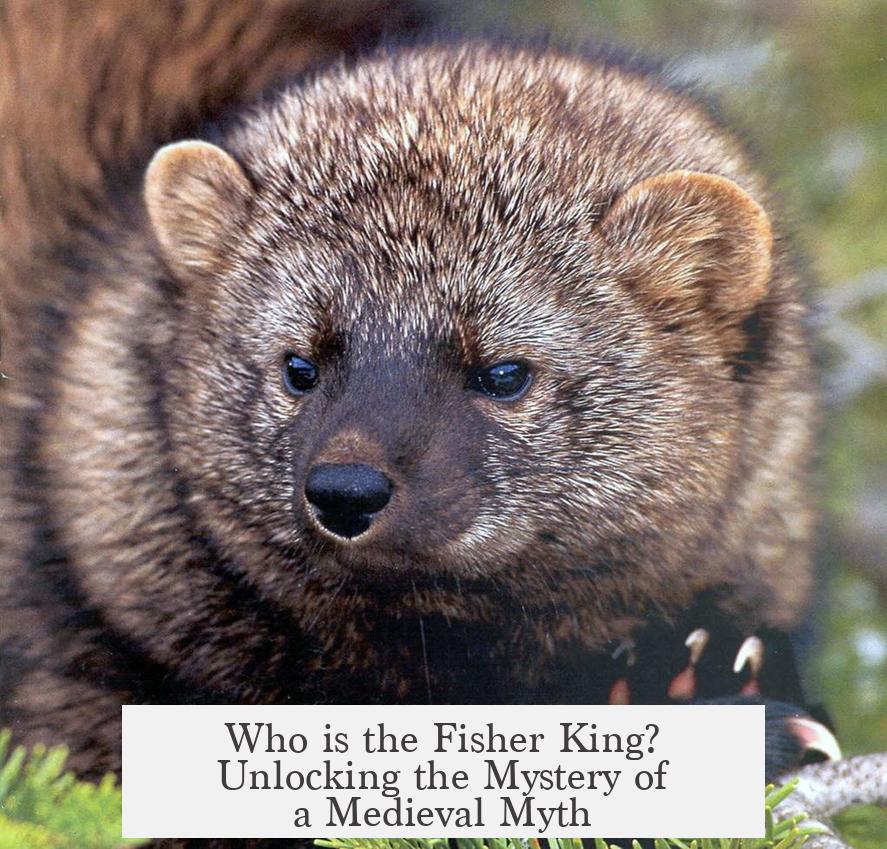
The Fisher King is a mythical figure born from medieval Grail romances, particularly first introduced by Chretien de Troyes in his unfinished work Perceval (1181-1190). To put it simply: no historical person once walked this earth bearing that name. Instead, the Fisher King exists at the crossroads of symbolism, legend, and literary invention.
Let’s explore this enigmatic figure in detail — his origin, role in the Grail quest, symbolic meaning, and lasting impact on medieval literature and beyond. Ready? Grab your fishing rod (or lance) and dive in.
The Birth of a Legendary Figure
The Fisher King’s story begins in the vibrant tapestry of Arthurian legend. Chretien de Troyes, a pioneering French poet, first wrote about this curious character in his unfinished romance Perceval. Here is where the Fisher King is introduced as a crippled nobleman who rules over the mystical Grail Castle.
Unlike many mythical kings depicted in grandeur or glory, this king wakes up with a serious problem: a debilitating wound through his thighs. The injury has left him immobile, unable to mount his horse or participate in noble pursuits. So, what’s a sidelined king to do? He fishes from a boat—hence the nickname “Fisher King.” It’s destiny making him the royal angler.
Perceval Meets the Fisher King: The Heart of the Grail Quest

Early in the Grail romance, Perceval encounters the Fisher King’s castle. He witnesses a procession where three mysterious items parade by: the sword, the bleeding lance, and the glowing Grail. But in an ironic twist, Perceval remains silent — he doesn’t ask the essential questions about what he sees, especially about the Grail and the bleeding lance.
This silence is significant.Tomorrow, the castle is abandoned, signifying a kingdom fading away — all because the healing question went unasked.
The story demands that Perceval begin a quest: to rediscover the Grail Castle and fulfill expectations of courage and worthiness before the Fisher King will trust him with the Grail and its secrets. The journey is cyclical and spiritual; Perceval must see the Fisher King three times and witness those three symbolic items to complete his quest fully.
What’s the Big Deal with the Fisher King’s Wound?
The wound isn’t just physical; it symbolizes a lineage in crisis and lost fertility. The Fisher King’s injury hints that he is infertile, unable to produce heirs — a problem grave in medieval noble families tied closely to inheritance and legacy.
The bleeding lance and the broken/mended sword carry strong phallic imagery. This symbolism suggests that the kingdom’s health and the king’s own vitality are intertwined.
More interestingly, the Grail itself is fecund, or life-giving. In the poem’s epilogue, Perceval lives solely on the Grail’s produce for seven years, illustrating the Grail’s nurturing power compared to the king’s impotence.
Is the Fisher King Just a King or Something More?

Consider this: the Fisher King fishing from a boat deliberately evokes the image of Simon Peter from the Bible — “the fisher of men.” It’s a subtle yet potent religious allusion.
Moreover, the story layers characters and objects in triplets: the king, Perceval, and the Grail; the sword, the lance, and the Grail. This triadic theme mirrors the Christian concept of the Trinity, suggesting spiritual significance.
Perceval’s journey is not just about finding a castle—but about proving his virtues, earning his birthright to a holy lineage, and possibly succeeding the Fisher King. This imagined succession connects to the Church and even the papacy, presenting fascinating parallels between myth and medieval spiritual authority.
The Fisher King in Medieval and Later Literature: Expanding the Myth
After Chretien’s initial sketch, other medieval authors further developed the Fisher King’s legend. Wolfram von Eschenbach, a German poet, picked up on the story and wove in his own details. Later, Sir Thomas Malory integrated the character into his famous Le Morte d’Arthur, shaping the narrative into something like a historical epic from legend.
| Author | Contribution to the Fisher King Tale |
|---|---|
| Chretien de Troyes | Original presentation of the Fisher King, focusing on his injury, the Grail, and Perceval’s quest. |
| Wolfram von Eschenbach | Expanded symbolism, character depth, and mysticism surrounding the Grail and the King. |
| Sir Thomas Malory | Placed the story within the context of Arthurian history, emphasizing noble lineage and divine right. |
In medieval literature, the Fisher King grounded the Grail in reality by giving it a physical home — the Grail Castle — and personifying noble lineage and divine sanction through the king. Writers used this to reinforce social order, showing that noble bloodlines were not only hereditary but ordained and spiritually validated.
The Elusive Healing Question

One of the most famous aspects of the Fisher King story is the “healing question.” To cure the king’s wound and restore his lands, Perceval must ask a specific question during his encounter. Strangely, the exact question isn’t explicitly stated in Chretien’s original text or the versions we have.
Some scholars speculate that the question pertains to the nature of the Grail or the lance—the objects closely tied to the King’s injury and the land’s health. Without asking, Perceval’s silence prolongs the king’s suffering and the kingdom’s desolation. The story teaches us about the power of awareness and inquiry. Sometimes, what we fail to ask matters just as much as what we do.
Why Does the Fisher King Matter Today?
Why would a medieval wounded king fishing from a boat still captivate us? The Fisher King embodies themes still deeply human: brokenness, missed opportunities, lineage and legacy, and the quest for healing.
His depiction forces readers to confront the idea that leadership is fragile; wounds—literal or metaphorical—can weaken not only a person but an entire community. The king’s impotence symbolizes a greater crisis that requires active questioning and courage to mend.
Furthermore, his story offers a powerful metaphor for renewal and redemption. Like Perceval, we must engage actively, ask bold questions, and undertake journeys (both inner and outer) toward wholeness.
Some Practical Takeaways from the Fisher King Story

- Don’t hesitate to ask crucial questions. Silence or ignorance can prolong suffering, just like Perceval’s failure to ask about the Grail.
- Recognize brokenness as a shared human experience. Even kings get wounded; acknowledging this vulnerability opens the door to healing.
- Your quest may require persistence. Perceval had to seek the Grail Castle multiple times before success—sometimes, you need to “try again.”
- Legacy depends on more than bloodline. Virtue and right action earn you your place in any lineage, noble or otherwise.
Wrapping It Up: The Fisher King Through a Fresh Lens
The Fisher King is more than a medieval myth; he is a figure embodying a spiritual and social crisis that demands resolution through courage, questions, and questing. He represents wounded leadership, broken lineage, and the power of restoration through active participation and inquiry.
His story, framed initially by Chretien de Troyes and elaborated by later authors like Wolfram von Eschenbach and Sir Thomas Malory, connects religion, nobility, and mystical symbols to tell a tale still potent today.
So, the next time you hear about the Fisher King, remember: he’s not just some old king fishing quietly somewhere. He’s an invitation to ask what needs asking, to heal old wounds, and to embrace the quest of becoming whole again—with or without a lance, sword, or shining Grail.
